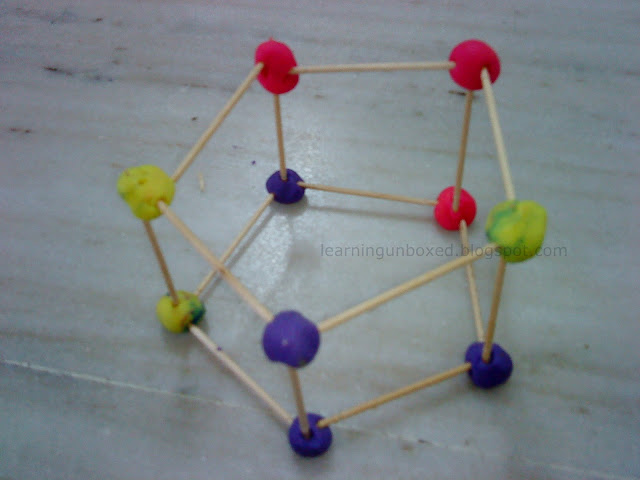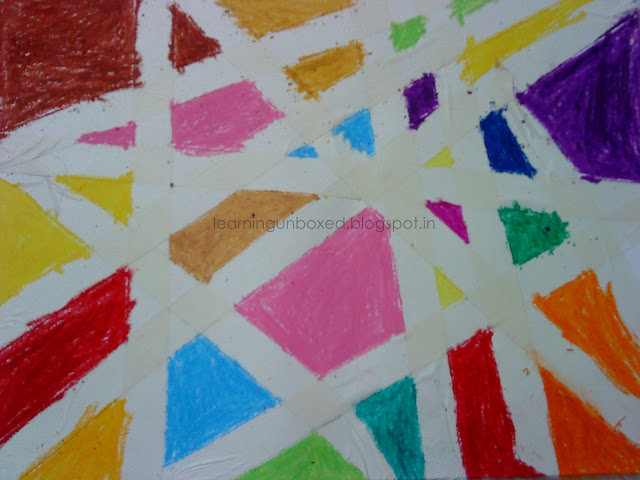"Logic will get you from A to Z, imagination will get you everywhere" - Albert Einstein.
Can you teach a child to imagine? How can one be imaginative? Is it natural? Can I really unleash imagination in someone else? Well, sharing my experience about how a child can powerfully and beautifully unleash his imagination when an educator gets curious about their work.
It all started with a tape resist art that we chose to do. An initial discussion about tape resist painting was good enough for him to be curious and jump in to work on it. With some help in holding the tapes initially, he was ready to start colouring and was on his own. Here is what we got.
Here is the link if you would like to know more about Co Active coaching.
One of the cornerstones of Co Active coaching is that the client/learner is naturally creative, whole and resourceful and that they have the answers or they can find the answers. The job of a Co-Active Coach is to ask powerful questions, listen and empower to elicit the skills and creativity a client already possesses, rather than instruct or advise. Hence, asking open ended and powerful questions has always been a part of my facilitation style.
Once he finished his work, I just asked him couple questions related to what does the art mean to him and how does he visualize it. The very next moment, he started to explain, "I will tell you. The green color and the baby pink color is the beautiful lotus flower in the middle. Near the lotus, you see a red rose garden. In between the lotus and red rose garden is the grassland. On the other side, you can see a big strawberry farm and below it is the soil area where there are no flowers. And the blue patch is the big west swimming pool . On the south east, is maple tree full of orange autumn leaves (he is very fond of maple leaves)." He went on to add that the blue patch on top of the lotus is the smaller swimming pool towards north, a rose garden in north west area, the yellow patch in north east is the park and the other two yellow patches are the western parks and the list went on and on. All I could do was just listen and visualize a beautiful farm, garden, swimming pools, mango groves etc through his guided imagery.
Such is the imagination of a child which is very vivid and beautiful. I was amazed by the creativity he demonstrated, firstly to visualize nature in few patches of oil pastel colors and secondly his mastery in the way he integrated Geography with this art to reinforce his knowledge about directions. If I had not asked the open ended question, I may not have come to know about his visualization. I was very happy to understand his creative imagination .
One precious gift that we can give our children is to ask questions, listen to them keenly and lovingly, not impose our ideas unto them. This is nothing about teaching creativity, but it is very much about understanding how creative they naturally are. Mainly, it is about being curious and being interested in them. In cases where children demonstrates vivid imaginative skills, it is expected that the educators accept unusual ideas and not be judgmental about their ideas. While a visually dominant child can demonstrate such strong visualization skills naturally, guided imagery has been proved to be a positive way of helping all children in general to visualize in order to encourage imagination. Either ways, the child actually imagines and 'Imagining" is a higher order thinking that helps anyone to communicate in a unique way, creatively think to form original and innovative ideas.
There are times when the educator gets creative and introduces own concepts and ideas to the learner, which could be a requirement too. Learning is a beautiful and connected dance between the teacher and the student in which both take the role of the learners and dance in the moment.
Have you ever noticed that children keeps imagining about wonderful things? If not, it is time to observe them, start a conversation with them to allow them to guide us, so we can learn lots and lots from them about their dream world.
Enjoy learning and sharing.
Prabha









